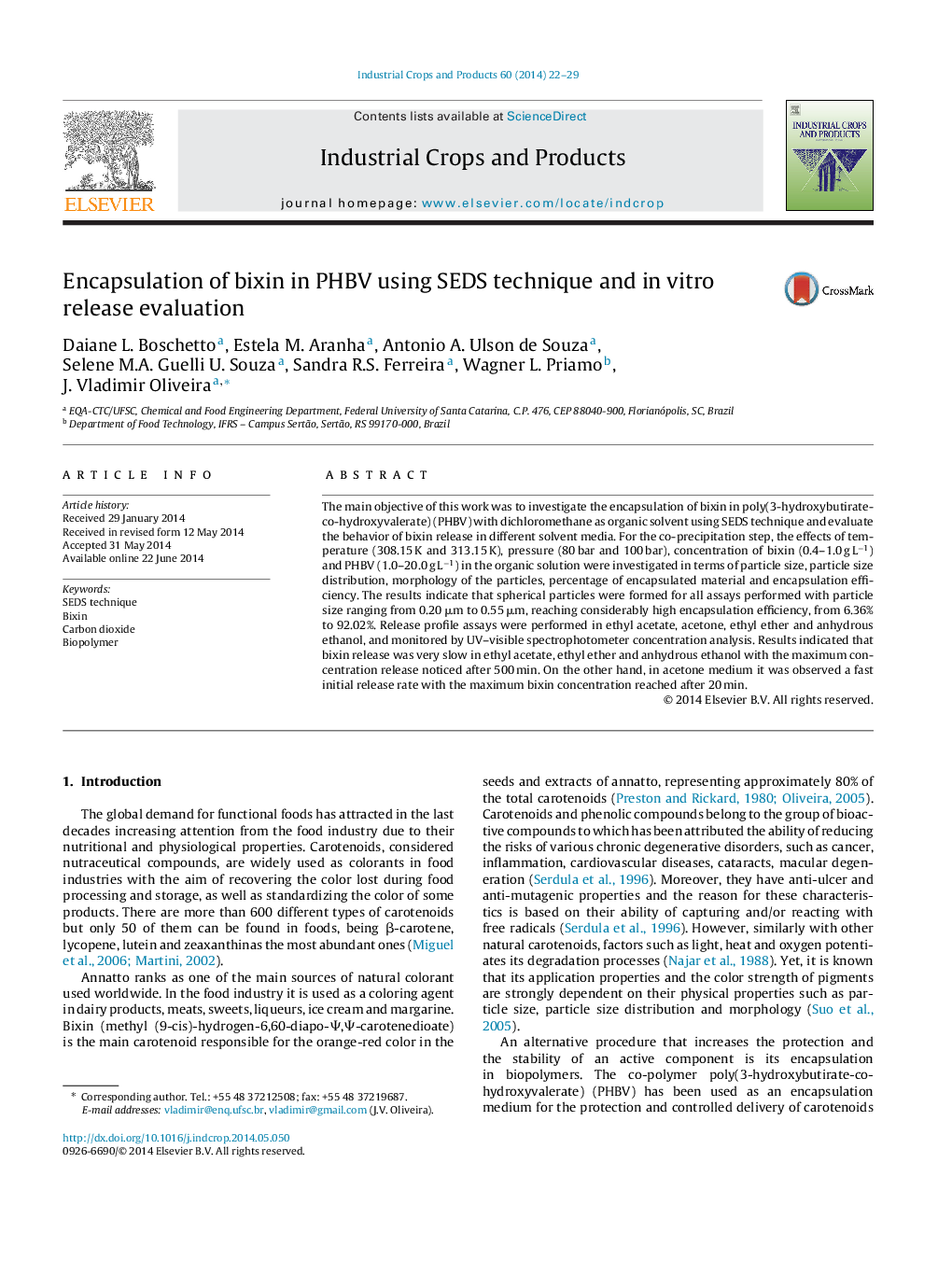| Article ID | Journal | Published Year | Pages | File Type |
|---|---|---|---|---|
| 6376298 | Industrial Crops and Products | 2014 | 8 Pages |
â¢Encapsulation of bixin in PHBV using SEDS technique.â¢Spherical particles were formed in the range of 0.20 μm to 0.55 μm.â¢High encapsulation efficiency, from 6.36% to 92.02%, was achieved.â¢Release profile assays were performed in ethyl acetate, acetone, ethyl ether and anhydrous ethanol.
The main objective of this work was to investigate the encapsulation of bixin in poly(3-hydroxybutirate-co-hydroxyvalerate) (PHBV) with dichloromethane as organic solvent using SEDS technique and evaluate the behavior of bixin release in different solvent media. For the co-precipitation step, the effects of temperature (308.15 K and 313.15 K), pressure (80 bar and 100 bar), concentration of bixin (0.4-1.0 g Lâ1) and PHBV (1.0-20.0 g Lâ1) in the organic solution were investigated in terms of particle size, particle size distribution, morphology of the particles, percentage of encapsulated material and encapsulation efficiency. The results indicate that spherical particles were formed for all assays performed with particle size ranging from 0.20 μm to 0.55 μm, reaching considerably high encapsulation efficiency, from 6.36% to 92.02%. Release profile assays were performed in ethyl acetate, acetone, ethyl ether and anhydrous ethanol, and monitored by UV-visible spectrophotometer concentration analysis. Results indicated that bixin release was very slow in ethyl acetate, ethyl ether and anhydrous ethanol with the maximum concentration release noticed after 500 min. On the other hand, in acetone medium it was observed a fast initial release rate with the maximum bixin concentration reached after 20 min.
